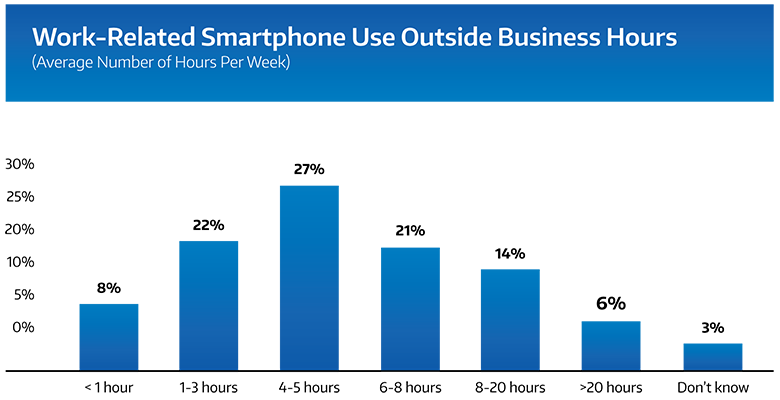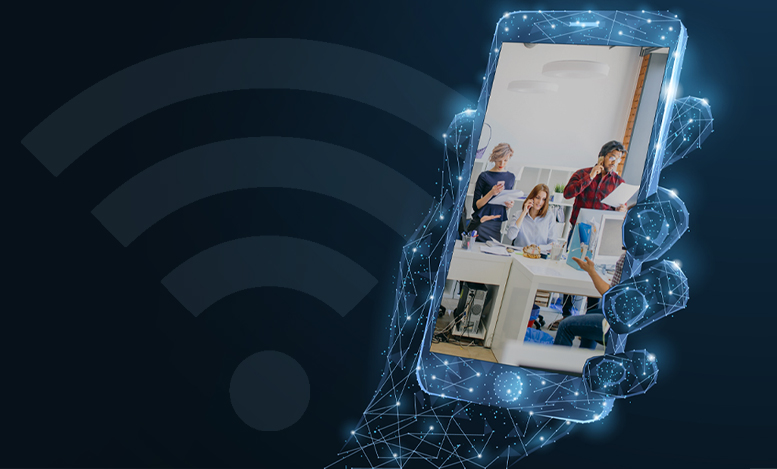Next time you are walking through any company, I challenge you to scan the environment and notice the number of mobile devices being utilized. Mobility in the workplace has been a popular trend in the technology world, with 74% of U.S. companies utilizing a bring your own device (BYOD) strategy in their organization. Other reports from Cisco have found that workers prefer and are more productive utilizing their own devices, and were able to save an average of 81 minutes per week with a BYOD policy. Although this increase in mobile devices can lead to increased productivity, it poses concerns for most IT departments.

Figure 1: Small and Medium Sized Businesses with a formal BYOD plan. (Source: Syntonic 2016 Employer Report: BYOD Usage in the Enterprise)
Most IT professionals have their hands full with daily tasks: maintaining a secure environment, ensuring network continuity, servicing help desk requests, and maintaining their data centers. The addition of mobile devices adds another layer of complexity into their day and leaves less time for innovation, growth, and future project planning. Many companies have limited IT staffing resources, with departments commonly consisting of 5–10 employees. Fortunately, for these IT teams, mobile device management solutions are available.
What Is Mobile Device Management?
Mobile device management (MDM) solutions play an intricate role in the lifecycle management of many IT departments and allow for the streamlining of device management for IT professionals. With the large rate of organizations implementing mobilized strategies, this is becoming an essential tool that all IT departments, especially those that fit the small and medium business mold, should be strongly considering.
Here are five reasons why MDM solutions should be implemented:
1. Ease of Managing Devices
Any organization utilizing mobile devices can benefit from an MDM solution. Managing all of the company assets, conducting all of the application updates, and controlling the content that the end users are accessing is no small task, especially for smaller IT teams. These solutions give IT professionals those capabilities all in one interface, drastically saving the company on time, money, and human capital.
To further complicate management, there has been an increased number of employers offering the ability to work remotely. Remote work provides additional challenges surrounding support of employees, with the two major concerns being security and remote troubleshooting. Along with the added security features, MDM solutions can provide another form of support to these employees, allowing IT professionals to assist in software support by pushing out updates directly to the users.
2. Enhanced Security at End Points
It is no secret that security is essential in this day in age. It is imperative that confidential data and personal information are not leaked or mishandled. MDM can provide additional security features by encrypting data. A recent study conducted by Tenable found malware was downloaded by mobile devices in 39% of respondents, and 21% of respondents have had a security breach through the utilization of their BYOD strategy. In addition to malware, data can be compromised through the physical means of someone stealing the device. If a device is stolen or misplaced, IT professionals can remotely wipe the devices as well as lock users out of the devices.
3. Controlling User Content
The implementation of MDM solutions can assist IT professionals in controlling the content that users are able to access. Policies can be set so that users can only access approved content, limiting users’ ability to access unapproved sites that could compromise the entire network. IT professionals can monitor the data consumption of each device and can limit the bandwidth the user is allowed to consume to reduce bottlenecks in the network. Another feature is geofencing capabilities, in which the IT staff can be notified if devices are out of a specified geographic location.
4. Support for Multiple Devices
All of the mobile devices that an employee uses and that are on the network can be supported. The average employee utilizes three or more devices daily for work. If you think about this in your work environment, most employees have access to their company email on mobile phones, notebooks, and tablets.

Figure 2: Smartphone use outside of business hours. (Source: Syntonic 2016 Employer Report: BYOD Usage in the Enterprise)
Two thirds of employees spend at least 4 hours a week using smartphones for work purposes, with some employees utilizing their phone upwards of 8 hours a week for work. This triples the vulnerability of the environment and forces IT departments to spend more time ensuring the security of their environment.
5. Cost Reductions
In the age of mobility and BYOD, companies are leaning on employees to use their own devices, and the responsibility of hardware costs is not on the company. Since 2011, the market for BYOD has increased threefold, from $67.21 billion to $181.39 billion in 2017. The companies would rather allow their employees to utilize their personal devices for work and manage work-related applications on those devices. Putting the responsibility of the device onto the end user drastically cuts the cost of hardware to the employer. In addition to the reduction in hardware prices, fewer resources need to be allocated to providing end users with cellular data costs.
Why Mobile Device Management?
With the rapid implementation of mobile devices in the workplace, mobile device management solutions are becoming absolutely critical. The implementation would have a direct impact in most businesses, whether you are a business owner, CTO, IT Director, or help desk associate. MDM solutions aid in the management and security of mobile devices and give IT professionals an easier way to control the users and devices that are connected to the network. In small IT departments the ease in management of devices provides more time for productivity, planning, and innovation.
Ready to build your own mobile device management strategy? Our experts are ready to work with you every step of the way.

